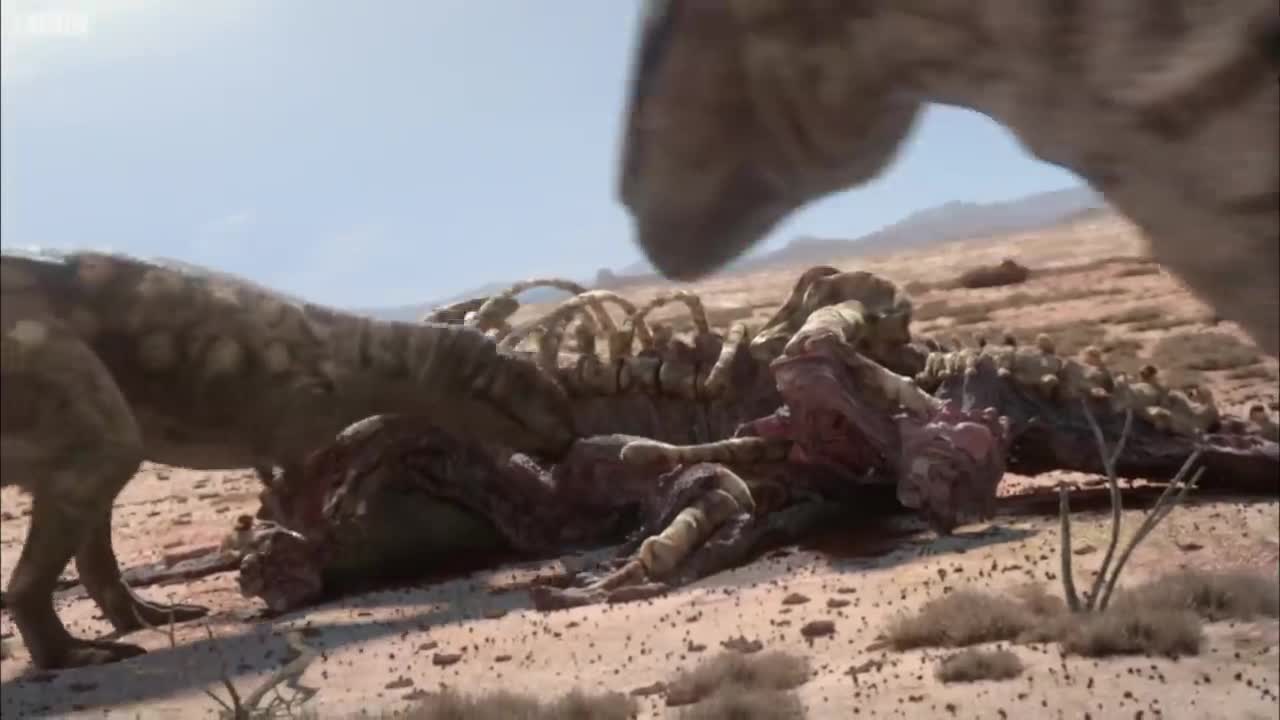Premium Only Content

Dinosaur Cannibalism 🦖 | Planet Dinosaur |
A few years ago, a paper published in the distinguished scientific journal Nature bore an arresting title: "Cannibalism in the Madagascan Dinosaur Majungatholus atopus." In it, researchers described their discovery of various Majungatholus bones bearing Majungatholus-sized bite marks, the only logical explanation being that this 20-foot-long, one-ton theropod preyed on other members of the same species, either for fun or because it was especially hungry. (Since then, Majungatholus has had its name changed to the slightly less impressive Majungasaurus, but it was still the apex predator of late Cretaceous Madagascar.)
As you might have expected, the media went wild. It's hard to resist a press release with the words "dinosaur" and "cannibal" in the title, and Majungasaurus was soon vilified worldwide as a heartless, amoral predator of friends, family, children, and random strangers. It was only a matter of time before The History Channel featured a pair of Majungasaurus in an episode of its long-extinct series Jurassic Fight Club, where the ominous music and portentous narration made the offending dinosaur seem like the Mesozoic equivalent of Hannibal Lecter ("I ate his liver with some fava beans and a nice Chianti!")
Notably, Majungasaurus, aka Majungatholus, is one of the few dinosaurs for which we have indisputable evidence of cannibalism. The only other genus that even comes close is Coelophysis, an early theropod that congregated by the thousands in the southwestern U.S. It was once believed that some adult Coelophysis fossils contained the partially digested remains of juveniles, but it now appears that these were actually small, prehistoric, yet uncannily dinosaur-like crocodiles like Hesperosuchus. So Coelophysis (for now) has been cleared of all charges, while Majungasaurus has been pronounced guilty beyond a reasonable doubt.
-
 1:17:29
1:17:29
Kim Iversen
4 hours agoTrotskyite Neocons: How MARXISTS Built the Modern GOP
70.7K51 -
 LIVE
LIVE
The Jimmy Dore Show
2 hours agoImmigrant Firefighters ARRESTED By Border Patrol! Zionists CENSORING Wikipedia! w/ Dave DeCamp
4,489 watching -
 LIVE
LIVE
Nerdrotic
3 hours ago $4.62 earnedLet's TACO-bout Take Us North, Hollywood COPE! Cracker Barrel CRACKED! | Friday Night Tights 369
1,679 watching -
 LIVE
LIVE
StoneMountain64
3 hours ago#1 Battlefield Mastery Session with the BOYS
208 watching -
 1:23:45
1:23:45
Roseanne Barr
4 hours agoDeclassifying Presidential Sex Slavery W/ Cathy O’Brien | The Roseanne Barr Podcast #113
93.5K27 -
 LIVE
LIVE
FusedAegisTV
18 hours agoHollow Knight Silksong Waiting Room ~~ pt. I
95 watching -
 8:37
8:37
Warren Smith - Secret Scholar Society
7 hours agoJesse Lee Peterson EXPOSES How Stupid David Pakman Really Is
19.3K11 -
 44:44
44:44
Scammer Payback
9 hours agoCrazy Confrontation with Hacked Scammer Group
4.56K2 -
 1:09:00
1:09:00
vivafrei
4 hours agoKamala Harris Security Being "Pulled"? Kilmar Wants Trump Admin GAGGED! Fake News GALORE & MORE!
70.5K34 -
 1:33:32
1:33:32
The Quartering
6 hours agoContest Winners Picked, More Trans Attacks, SNL Collapsing, Raja Jackson STILL Not Arrested!
207K171